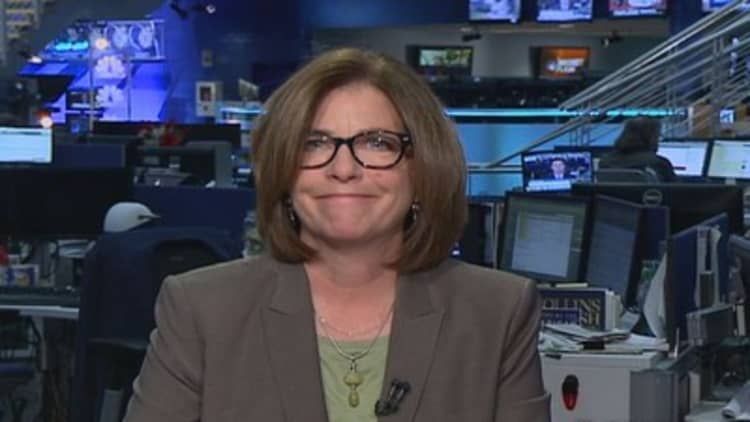
Global bond yields are in a deep slide, taking the 10-year U.S. Treasury to a level not seen since October—well before the Fed began winding down its easy money program.
The common themes are accommodating central bankers and concerns about growth. In the U.S. a short position in Treasurys continues to support the market as investors are forced to cover with each notch higher in price and lower in yield. Yields were lower across the curve, but the 10-year yield broke below a range that it has held since the end of October, touching a low yield of 2.52 percent.
Reports that the European Central Bank has a road map for new stimulus, following ECB President Mario Draghi's dovish words last week, sent sovereign yields in Europe lower with some hitting all-time lows. The 10-year German bund yield touched 1.36 percent Wednesday.
"The biggest bond markets cannot really disconnect from each other. Global bond investors are looking across and saying 'Treasurys are cheap compared to bunds,'" said George Goncalves, head of rate strategy at Nomura.
Meanwhile, the 10-year gilt was as low as 2.57 percent after the Bank of England's inflation forecast and comments from Bank of England Governor Mark Carney suggested the BOE may not raise rates as soon as markets expected.
"I think the market's in a bit of a shell shock...People were expecting certainly in the 10-year sector of the range to hold," said Ian Lyngen, senior Treasury strategist at CRT Capital. The 10-year fell through its Feb. 3 low of 2.568 and touched 2.52 percent.
"The catalyst is the more dovish stance on European monetary policy, the weaker data in Europe a combined with less ambitious hiking expectations in the U.K. They didn't pull forward hiking expectations," Lyngen said.
Traders also pointed to headlines on the Peoples Bank of China encouraging banks to loosen mortgage lending.
Concerns about Ukraine are also putting a bid in Treasurys, in a flight-to-safety trade.
Read MoreStocks drop with Treasury yields; Dow halts 5-day winning run
Another side of the global rate story was the worry about global growth. Retail sales in the U.S. fell short of expectations Tuesday, while Chinese industrial production and retail sales were below forecast, and inflation readings in France Wednesday were flat and negative in Germany.
"Coming into this year, and especially where we are now within the year, the market was positioned to be much further along in the curve of fiscal and economic reforms, coupled with global growth patterns, and consequently there was this view we were going to have higher rates associated with those developments," said Adrian Miller, director, fixed income strategy at GMP Securities."
Strategists now expect the 10-year to take aim at 2.50 percent, where it could meet resistance.
"If we get poor housing data at the end of this week or CPI is a bit weak, we could arguably get to 2.5 percent on the 10-year which is below what I thought we could do," Miller said. "The way this market is behaving is far more powerful than we thought."
Goncalves expects the 10-year to break below 2.50 percent.
"There was an air pocket created post the June 2013 FOMC meeting," Goncalves said. "That unleashed the selling pressure that moved us from 2.25 to 2.50 in a heart beat...In October we got to 2.47. We have to break under 2.50 and see if we can purge the 2.25/2.50 range. We have to go into that range to see if the rally is over. We have to see the capitulation trade."
Goncalves said as the Fed tapered, the market overshot and the 10-year yield was at 3 percent at the end of the year. The Fed first tapered its bond buying program in December, trimming $10 billion from every meeting since then.
Traders said the Fed also competes with the market for securites at the long end of the curve, as it continues to buy, and that is also helping send rates lower.
Read MoreGundlach: Odds rising that yields will reach 2012 lows
—By CNBC's Patti Domm.


